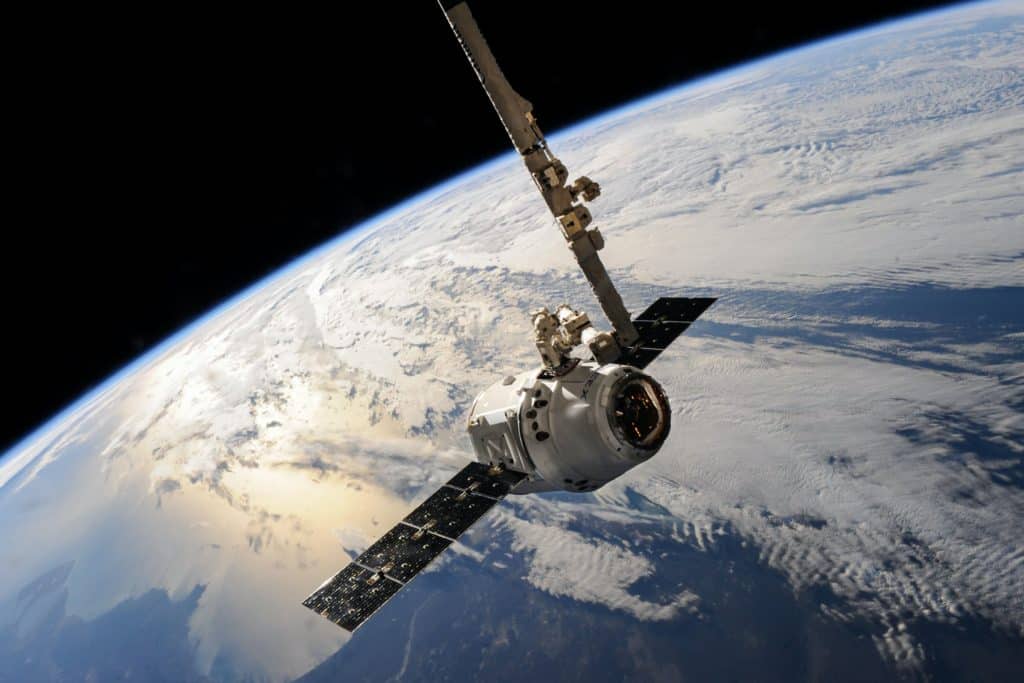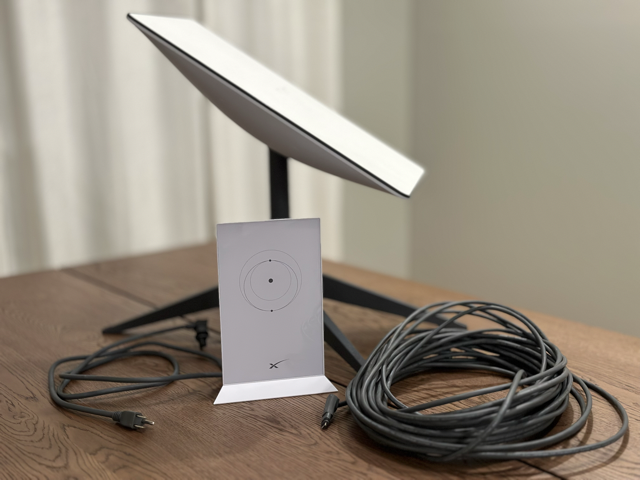A new space race is on, as multiple tech companies plan to launch massive satellite constellations in the coming years. Project Kuiper is Amazon’s answer to Starlink, and one of the three big players in LEO (low earth orbit) satellite internet constellations. Amazon first announced Project Kuiper in April of 2019. The following year, Amazon committed around $10 billion to launching the satellite internet service.
Like Starlink, Project Kuiper plans to maintain thousands of satellites in low earth orbit, in order to transmit and receive data from user terminals and ground stations. The full rollout could take a decade or more, but the launch of the first two Project Kuiper satellites is planned for late 2023 or early 2024.
In this article, I will explain the differences between Project Kuiper and Starlink. I will cover the satellite constellation design, ground stations, user hardware, and deployment timeline. Finally, I will speculate on some of the Project Kuiper unknowns, including price and performance.
Table of Contents
Satellite Constellation Comparison
In this section, we will take a look at the design differences between SpaceX’s Starlink constellation, and that of Amazon’s Project Kuiper.
Number of Satellites
As of late 2023, Starlink has over 5,000 satellites in orbit. Project Kuiper has no satellites in orbit, but the launch of their first two is scheduled for late 2023 or early 2024.
Starlink has FCC approval for around 12,000 satellites. Starlink has mentioned publicly that they have plans for a possible expansion of 30,000 satellites in the coming decades.
Project Kuiper has developed plans for 3,276 satellites in their constellation.
Both companies are designing their network to operate globally. After full satellite deployment, both networks could cover millions of customers worldwide who may not have access to broadband internet.
Orbit Altitude
Both Starlink and Project Kuiper operate satellites in low earth orbit (LEO). LEO is often defined as an orbit at altitudes lower than 1,200 miles above the earth. One of the advantages of operating satellites in LEO is the reduced latency experienced by the user. Starlink has already demonstrated latency as low as 20ms in the real world, which rivals fixed broadband.
Traditional satellite internet providers like Viasat and HughesNet use satellites that are in geosynchronous orbit, at an altitude of about 22,000 miles above the earth. This massive distance creates high latency, usually above 600ms. This renders their services unusable for online gaming and many other latency-priority internet tasks.
Starlink satellites orbit at an altitude of 340 miles.
Project Kuiper satellites will orbit at altitudes between 370 and 390 miles.
Satellite Launches and Deployment
Starlink has been deploying satellites since May of 2019. They have carried out over 100 launches, currently deploying about 20 of the v2.0 Mini satellites with each launch. The company plans to continue launching at a similar pace until they reach their goal of 12,000 operational satellites.
Project Kuiper has no satellites in orbit yet. The first two are scheduled to launch in late 2023 or early 2024. In April 2022, Project Kuiper signed launch contracts with three major operators for a total of 83 launches in the coming decade.
Ground Stations
A ground station is a physical location on earth that communicates with satellites in orbit. Ground stations are used as a communication hub, transmitting data from user terminals to the public internet.
Starlink has deployed dozens of ground stations around the world, with dozens more being planned and constructed. As the satellite constellation moves further along in its deployment, an increasing number of ground stations will be built to support a higher number of users.
Project Kuiper is currently planned to communicate with 12 existing AWS Ground Station Units. Project Kuiper has not announced how many ground stations they plan to build beyond that. It is likely that Project Kuiper will build ground stations in a similar fashion to Starlink as their satellite constellation deployment advances.
User Hardware
Starlink’s Standard user terminal is a small dish containing a phased array antenna. The dish is about the size of a pizza box, and weighs around 10 pounds. The hardware kit also includes a Wifi router and a mounting base. Starlink accessories, including cable routing kits and a variety of mounts, are sold separately.
There are other versions of hardware available, including the Flat High Performance dish, that is capable of in-motion use. Starlink is preparing to launch the Gen 3 hardware soon, which should introduce smaller, lighter, and more efficient antennas.
Project Kuiper’s user terminals are very similar. Like Starlink, Project Kuiper uses active phased array antennas. Amazon has announced initial plans to offer three different versions, aimed at different applications. The smallest antenna, measuring about 7 inches wide, will be perfect for portable use for camping, RV’s, etc. More powerful dishes for home internet and business internet will also be available.
Service Availability
Starlink launched a public beta in November 2020, and availability has been expanding since. The service is currently available in many countries around the world. At the time of this article, Starlink has over 2 million subscribers worldwide. Starlink coverage is now global, with the service being available virtually anywhere with a clear view of the sky.
Project Kuiper is still in the early stages of development. The project was announced in 2019 and Amazon has said they plan to have two satellites operational by 2024. Not much else is known about how Project Kuiper plans to roll out service to customers at this time, although Amazon has stated they aim to start end-to-end testing of their system by 2025.
Performance
Starlink’s performance is impressive compared to traditional satellite internet options. Starlink is capable of fast speeds, with some users getting above 300 mbps. The typical Starlink customer can expect between 50-150 mbps, according to Starlink. Upload speeds range from 5-20 mbps. Latency is typically below 50 ms.
See also: Starlink Internet Speeds
Project Kuiper has not released any performance goals for its upcoming satellite internet service. The phased array antenna is capable of download speeds in excess of 300 mbps, so we expect speeds to rival Starlink. Latency for Project Kuiper should also be similar to Starlink due to their satellites being deployed at around the same altitude, which is the primary variable for latency with satellite internet.
Cost
Starlink equipment starts at $599 for the Standard model. The monthly service cost is $120 per month, with no contract or early termination fees.
Related: Here Is What Starlink Internet Costs In 2023
Project Kuiper’s pricing has not been announced yet, but Amazon has said they plan to offer competitive pricing. Based on Amazon’s commitment and focus on providing a lower cost user terminal, we expect Project Kuiper to match or even undercut Starlink in terms of cost.
Final Thoughts
Right now, we don’t have a lot of detailed information about Project Kuiper. What we do know is that it’s very similar to Starlink, in that Project Kuiper will deploy worldwide satellite internet via LEO satellites and inexpensive user terminals.
What we will need to wait for are the important details regarding performance and cost. In addition to those details, we still aren’t certain if Amazon will offer service directly to consumers like Starlink. Amazon could distribute their satellite internet service through region specific companies, independent contractors, etc.





Something vs Nothing
Just installed Starlink. Sure beats my current ComSuck.